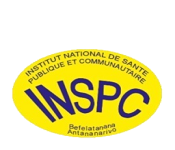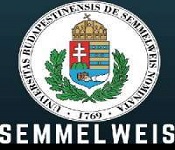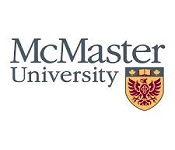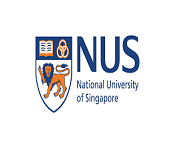Day :
- Diabetes & Endocrinology | Maternal Health Medicine | Global Health and Health Sciences | General Medicine | Public Health and Preventive Medicine | Paediatrics | Oncology | Emergency Medicine
Location: Haga
Session Introduction
Z S Yahaya
Kaduna State University, Nigeria
Title: Preparation and evaluation of self-nano emulsifying drug delivery system of Artemether using natural lipophile
Time : 13:20-13:50
Biography:
Z S Yahaya has completed his PhD from Ahmadu Bello University Zaria, Nigeria. He is currently working as a Lecturer in the Department of Pharmaceutics, Kaduna State University, Nigeria. He has published more than 5 papers in reputed journals.
Abstract:
The aim of this work was to formulate Artemether, a poorly water soluble drug into a Self-Nano Emulsifying Drug Delivery System (SNEDDS) using an indigenous natural lipophile extracted from sesame seeds via cool press. SNEDDS based on the pure indigenous natural lipophile and also blends of the natural lipophile with commercially available modified oil (labrafac CC) were formulated and their application in improving the delivery of Artemether was evaluated. Pseudo ternary phase diagram construction was carried out to identify stable formulations. Stable combinations from the phase diagram were loaded with Artemether and characterized with respect to globule size, Poly Dispersity Index (PDI), viscosity, drug-excipients compatibility and stability, emulsification time, drug loading efficiency, in vitro drug release, infinite aqueous dilution, post dilution drug precipitation and in vivo anti-malarial performance in Swiss male mice infected with lethal strain of Plasmodium berghei. The optimized SNEDDS had mean globule size of less than 50.0 nm, showed excellent emulsification time of less than a minute, promoted fast drug release, exhibited no phase separation and demonstrated the highest antimalarial activity. The oil component of the formulation contributed most significantly (P<0.05) to droplet size variations. The result highlighted the potential application of indigenous natural lipophile in the development of a nano drug carrier for the efficient delivery of Artemether, which can be applicable for other Bio pharmaceutics classification system class II and IV drugs exhibiting identical biopharmaceutical challenges.
Siddharth Sahai
National Institute of Medical Sciences, India
Title: Prevalence of use of thermometer by parents of children with fever
Time : 11:20-11:50
Biography:
Abstract:
An OPD questionnaire based study was carried out to assess prevalence of use of Thermometer by parents of children with fever.
Parents coming to the OPD of the Pediatrics department of two Medical colleges in Jaipur(Rajasthan, INDIA) were interviewed regarding use of thermometer at home in case their child was having fever prior to bringing the patient to the doctor.
A questionnaire was filled after taking their consent and anonymity of the patient and caregivers was maintained. A total of 240 parents were interviewed.
After the questionnaire they were educated on the use of the thermometer
Results showed that nearly 90 percent parents were not using the thermometer prior to bringing their child to a pediatrician with complaints of fever.
Samarth Sahai
Mahatma Gandhi Institute of Medical Sciences, India
Title: KAP study of mothers using knives, matches etc to protect their newborns
Biography:
Mr Samarth Sahai is studying 3rd semester M.B.B.S at Mahatma Gandhi Institute of Medical Sciences,Jaipur, India.
Abstract:
Mothers of newborns were interviewed regarding common practices being carried out by them and their logic behind using knives, matches etc to protect their newborns. We discussed how they can actually protect their baby through early and exclusive breast feeding, immunization and proper care and protection from mosquitoes. This exercise also made the young mothers question every practice and understand logic behind it rather than blindly follow them and gave them confidence that they have a right to question and do away with illogical practices
This study was done to initiate a healthy discussion in the post natal wards by the undergraduate medical students posted in Obstetrics and Gynaecology with the mothers who have delivered newborns in the last 72 hours. This discussion is a small step in awareness generation of ways to bring down the high neonatal mortality by tapping the most important link in the primary health care providing system i.e. the mother. The study was carried out in the post natal wards of the Obstetrics department of two medical colleges in urban areas of Rajasthan (INDIA)
Ning Li
China Academy of Chinese Medicine Science, China
Title: Study on Peptide-based High Density Lipoprotein (pHDL) targeting Atherosclerosis
Biography:
Ning Li has completed her M.D. in 2009 from University of Geneva, Switzerland, where she obtained her postdoctoral training focusing on metabolic disorders. After 4- year working at Chinese Academy of Medical Sciences and Peking Union Medical College, Ning Li is currently the associated professor of China Academy of Chinese metabolic diseases, mitochondrial function and dysfunction, and host metabolism in viral infection.
Abstract:
Atherosclerosis (AS) is a leading cause of death and loss of productive
life worldwide. The immature form of High-density lipoprotein (HDL)
has been shown advantageous in improving plaque targeting and antiAS
efficacy. However, the prohibitive cost of ApoA-I protein used to
generate functional HDL and the time-consuming procedure of HDL
synthesis impeded its clinical application. Though HDL mimic peptides
are capable of fulfilling HDL function with a dramatic low-cost, their
instability in vivo failed to put their utilization into practice. Our current
study was designed to synthesize peptide-based HDL (pHDL) in order
to increase in vivo stability of peptides by incorporating with
phospholipids. PHDL produced by microfluidics resulted in discoidal
nano-scale particles, showing of 37.8 nm diameter, 0.275 PdI and -4.17
mV zeta potential. Using in vivo imaging system, FITC-labeled pHDL
was highly recruited to the aorta of AS model ApoE-/- mice compared
to C57BL/6 control mice,24 hrs post-intraperitoneal injection.
Intraperitoneal administration of pHDL to ApoE-/- mice twice per week
for 12 weeks reduced more than 40% plasma TG, TC and LDL-C, which
leads to 40% reduction of aortic plaques. In addition, increase of
plasma ALT, AST and creatinine in ApoE-/- mice were largely
improved by pHDL treatment, indicating a general protective effect of
pHDL. In conclusion, pHDL represents an affordable alternative of
HDL, in terms of plaque-targeting and anti-AS effects.
Ruodan Xu
China Academy of Chinese Medicine Science, China
Title: Fibrogenic of hiPS-MSCs in 3D connective tissue growth factor-delivering scaffold
Biography:
Ruodan Xu has completed her PhD with cancer biology in 2010 from University of Copenhagen. Afterwards, she continued her postdoc in Geneva University, Cologne University and Aarhus University for studies on stem cells and tissue engineering. Currently, she is the associate professor of China Academy of Chinese Medicine Science. She has published more than 19 papers in reputed journals and has been serving as reviewers for many reputed journals. Her research interests focus on regenerative medicine, nanomedicine targeted elderly chronic disease including atherosclerosis and Alzheimer’s disease.
Abstract:
Scarcity and damaged fibroblasts is one cause of impaired healing. We
developed a novel 3D biomimetic scaffold for stem cells augmentation
and differentiation to fibroblasts. The 3D scaffold PFPC-C in this
study was prepared using electrospun PCL/Col1 fibers which
embedded in PEG-fibrinogen (PF) hydrogel and infiltrated with
connective tissue growth factor (CTGF). In vitro, PFPC-C scaffold
showed good biocompatibility confirmed by the human induced
pluripotent stem cells derived mesenchymal stem cells (hiPS-MSCs)
attachment, infiltration, and proliferation throughout the construct.
CTGF loaded in this scaffold were sustained released and hiPS-MSCs
coultured on the scaffolds showed stronger fibroblastic commitment.
The performance of the scaffold was further evaluated in vivo. PFPC-C
scaffolds seeded with or without hiPS-MSCs were implanted in the rat
muscle injury model. 4 weeks, 12 weeks and 6 months later the mice
were sacrificed respectively, the grafted implants were analyzed with
histologic and mechanical examinations. Our results showed this 3D
scaffold provided a suitable environment and well fibroblasts
differentiation from hiPS-MSCs. This 3D scaffold could be potentially
used in cell-based therapies for connective tissue related disorders.
Philip James
W. P. Carey School of Business -Arizona State University, USA
Title: What every doctor needs to know about personal branding: 2019 and beyond

Biography:
Philip James is a marketing and communications consultant to the medical and architecture industries. Philip is an expert at building narratives and personal brands. His clients include hospitals, physicians, and industry associations. He has worked at ENDO, and the World Congress on Thyroid Cancer.
Abstract:
In this case, branding isn’t necessarily about logos and taglines. Simply put, a physician’s brand is essentially equal to his or her reputation. What patients think about you, how well-known you are in your community, your online presence–that is your brand. More and more patients are turning to online sources to find a physician. They may look at your website, but they are also likely consulting online reviews and listings as well. Branding is more important than ever if you want to attract the attention of these patients, whether you are just starting out or are already an established physician. During this session, the following topics will be covered:
- Five steps to brand building
- How to use digital tools and social platforms
- The danger of doing nothing
- Case Study: Dr. Netterville
- Workshop
Location: Haga

Chair
Timothy B Erickson
Responding to chemical weapons violations in Syria: Legal, health education and humanitarian recommendation
Session Introduction
Monisha Sahai
Rajasthan University of Health Sciences, India
Title: Validation of pediatric quick review system as a medical education tool for teaching pediatrics to undergraduate and postgraduate medical students

Biography:
Monisha Sahai has completed her Post-Graduation from Institute of Medical Sciences at BHU and has worked as a Registrar in All India Institute of Medical Sciences (AIIMS), New Delhi and K.L.E Hospital, Belgaum in India. As State Consultant for Child Health in the Ministry of Health and Family Welfare (MOHFW), National Rural Health Mission (NRHM) she helped conceptualize, create protocols and set up Malnutrition Treatment Centers (MTCs) and Facility based Newborn care units in each of the 33 districts of Rajasthan State in India. She has also worked for National AIDS Control Organization (NACO) as Senior Medical Officer in SMS Medical College, Jaipur. She has been invited by the Planning Commission (Government of India) and has been a core group Member formulating the National Child Health Policy. Since 2014, she is working as an Assistant Professor in RUHS College of Medical Sciences, Jaipur. She has published two papers in reputed journals and is the Founder Trustee of a non for profit organization N-IDIA and a publication house (Jaipur Publications).
Abstract:
Undergraduate medical students are often at loss when they need to remember facts and practice those in clinical examination. To overcome this difficulty the author developed ‘Pediatric Quick Review System (PQRS)’, a peer reviewed medical education tool for providing a protocol based, self-placed training in pediatrics. To test its effectiveness, the students were asked to volunteer for the study. This study was pre-approved by the University’s Ethical Committee and the Academic Research Development Unit (ARDU). The students were divided into two groups, study group consisting of 52 undergraduate and 8 post graduate students and a control group of 41 students who volunteered not to enroll in this study. The study group students after giving a Pretest, were provided the PQRS tool free of cost, followed by a post test at the end of 3 weeks and submission of a SMART (rating w.r.t specific, measurable change, accessible, realistic goal achievement and time bound) feedback form regarding their opinion about the usefulness of this tool. The efficacy of the tool was evaluated by comparing the pretest and post test scores of the study group students as well as the improvement in quiz performance over two weeks. The pretest scores were found to be less than 50% of the post test score.
- Occupational Health & Safety | Alternative Medicine | Surgical Medicine and Medical Education | Cardiology | Nursing Education | Immunology & Infectious Diseases
Location: Haga
Session Introduction
Katie Jane Edwards
University of Sheffield, UK
Title: Medical students’ perceptions of general practice: Influencing future primary care education
Biography:
Katie Jane Edwards has completed her Master’s in Public Health with Leadership and Management from the University of Sheffield. She has had a previous collaborative authorship in The Bone and Joint Journal.
Abstract:
Background: The current interest in General Practice (GP) at medical school is low. In 2020 the NHS is expected to be short of 12100 general practitioners and the GP training program has recruited below target level in recent years. There is a lack of hard evidence on how to improve student interest in GP. Preferences towards specialties occur at medical school therefore, it is necessary to discover medical student’s opinions on general practice placements and how to make changes at medical school to improve future perceptions of the career.
Methods: 16 medical students who had completed one or more general practice placements were recruited via convenience and snowball sampling to participate in a semi-structured interview. The questions were based on perceptions of general practice, how they occur and how the negative perceptions can be challenged. The data was analyzed using the grounded theory approach to extract the themes present throughout the data.
Findings: Key perceptions expressed by interviewees regarding GP were balanced, positive and negative, amongst the sample. Common recommendations made to promote general practice as a specialty include equal weighting of GP compared to other specialties; highlight the diversity of GP and compulsory specialty focused career guidance.
Discussion: To increase the number of GP trainees, perceptions of GP need to be changed. The main areas of contribution are the quality of placements, exposure to good supervisors and peer and public sharing of perceptions. Medical student views can be useful in shaping future teaching of primary care education.
Biography:
Alexander Young holds a Master’s degree in Surgical Science, a Postgraduate Certificate of Medical Education and Membership of the Royal College of Surgeons. He has been on the Editorial Board of several surgical journals and has published over 20 journal articles and edited 7 books. He was the youngest Committee Member of the British Orthopaedic Trainees Association after founding the International Future Orthopaedic Surgeons Society as a Medical Student and has also held committee positions at the Royal Society of Medicine.
Abstract:
Over 60% of 4th year medical students lack confidence in dealing with cardiac arrest situations. Recent technology advancements allow smartphones to be converted into virtual reality headsets. We have developed a method of Virtual Reality Fully Immersive Interactive Technology Teaching (VR FIITT) where a student may be fully immersed in a virtual reality teaching scenario. A pilot research study took 75 preclinical medical students and used five different training methods to teach them Cardiopulmonary Resuscitation (CPR). Each group was provided 20 minutes of training via their designated training method. After which they were asked to rank their confidence to perform the technical steps of CPR on a real patient, their enjoyment of the teaching method and their confidence to perform this skill in a real environment under pressure. VR FIITT scored highest in all three areas of assessment compared to the other teaching methods. Students enjoyed the VR FIITT (P=0.028) and had more confidence to use their skills in clinical practice (P=0.045) compared to all other teaching methods. However it was only shown to be superior to video and textbook teaching methods (P=0.036) when assessing how confident students felt with the steps of CPR. The nature of resuscitation events is a main factor in why medical students feel underprepared to attend resuscitation calls as a newly qualified junior doctor. This project highlights this technology can be used to address this issue by helping to reduce anxiety and potentially improve performance, when faced with these events in real life.
Lantonirina Ravaoarisoa
National Institute of Public and Community Health, Madagascar
Title: Factors associated with the seasonal variation of the nutritional status among mother in a rural setting in Madagascar
Time : 14:00-14:30

Biography:
Lantonirina Ravaoarisoa is pursuing Doctoral studies from the Public Health School of the Université Libre de Bruxelles, Belgium. She works at the Research and Expertise Department of the National Institute of Public and Community Health in Antananarivo, Madagascar. She is a Researcher and Teacher Assistant at the Faculty of Medicine of the Université of Antananarivo, Madagascar.
Abstract:
The prevalence of under-nutrition among rural population in developing countries increases during the lean season. This study aims to identify the factors associated with the seasonal variation of the nutritional status amongst mothers in a rural setting in Madagascar. A cohort study was carried-out among 670 mothers aged 18-45 and living in the rural area of Amoron'i Mania Region of Madagascar. Inclusion in the study occurred during the post-harvest season (July-August 2015), and mothers were followed until the end of the next lean period (February 2016). The difference between the body mass index and the middle upper arm circumference for both seasons was calculated to assess the seasonal variation of the nutritional status in women. Linear regression was used to identify the factors that contribute to the seasonal variation. The mean (SE) difference of the body mass index between the two seasons was -0.44 (0.04) kg/m² and -7.17 (0.48) mm for the mid upper arm circumference. Factors associated with the variation in body mass index are: Low level of education [β (95% CI)=-0.54 (-0.91; -0.18), p=0.003] and increase in the number of children under-five [β (95% CI)=-0.20 (-0.29; 0.11), p<0.001]. For mid upper arm circumference, these factors are: Low level of education [β (95% CI)=-4.62 (-8.93; -0.30), p=0.002], increase in the number of children under-five [β (95% CI)=-1.58 (-2.65;-0.52), p=0.004] and pregnancy [β (95% CI)=-6.17 (-9.36; -2.98), p<0.001]. Fight against maternal under-nutrition in the study area has to take into account the level education of women, the number of children under five and the pregnant women.
Krisztina Juhos
Semmelweis University, Hungary
Title: Train the trainers: A new level of specialist's training in surgery
Time : 11:30-12:00

Biography:
Krisztina Juhos has completed her Doctor of Medicine - MD in 2014 from the University of Debrecen, Debrecen, Hungary. Her attention is towards the surgical education, mainly integrating the principles of Competency Based Medicine (CBME) into the training of the minimally invasive surgery. She has participated in several international consortiums in the field of surgical specialty training supported by the European Union.
Abstract:
Several points of differences in surgical residency programs can be found among European countries. Despite the fact that gradual medical education is really well structured and organized all over the world, there are no standardized curricula for surgical specialist's training. The teaching staffs of residency programs are mainly consultants, mentors and experienced surgeons who were selected according to their surgical expertise without any teaching experience. In 2015 a survey have been assessed the characteristics of the specialist's training in surgery (general, thoracic, vascular, pediatric, plastic surgery, urology, orthopedics, traumatology, etc.). The following details have been highlighted that one third of residents received only verbal information during their practical process or the 6 year surgical training wasn’t previously planned for almost 49% of surgical residents in Germany. The issues are similar to these rates in many other European countries. The background of our study is the need to improve specialist's training in surgery and the lack of Pan-European standardization. The 'train the trainers' association with the members from western, central and eastern Europe, supported by the Erasmus program of the European commission is going to determine the unified requirements and curriculum for the pedagogical and didactic training of surgical trainers. Finally, the profile and curriculum will be completed by a multilingual e-learning program.
Salman Akram
Unistra, France
Title: A novel method for preparation of silica based nano double emulsions
Time : 12:00-12:30
Biography:
Salman Akram is a Post doctoral fellow currently pursuing his career in Unistra located in France.
Abstract:
Drug delivery system has property of encapsulating both hydrophilic and hydrophobic in double emulsion system (e.g. w/O/W) contents are of great interest for scientists. In our study, we have proposed the formation of such a system in the form of double emulsion at nano scale. Reaching such a small level can lead to loss of encapsulation efficiency of system. Herein we proposed a new technology that reinforces the inner water droplet with silica shell, resulting in the improvement of the encapsulation efficiency. Firstly, primary w/O emulsion is prepared by ultra-sonication and its characterization and optimization for size distribution and dispersity index is done to select the best candidate for making the double emulsions. Then, double emulsion at macro-scale is obtained by mechanical mixing and at nano-scale by spontaneous emulsification. A morphological study by optical microscopy is done to visualize the double structure at micro scale. Encapsulation efficiency and stability against severe temperature conditions has been analyzed and proved that system having silica are much more effective regarding encapsulation as compared to control. Morphological studies by transmission electron microscopy are done to visualize appearance of the nano double emulsion droplets. Then, encapsulation studies proved that systems having certain amount of silica are more protective as compared to control even at nano scale. Finally, release studies proved that system can release almost all of encapsulated materials at 37 ºC.
Biography:
Rajeev K Tyagi completed his PhD and he is currently a Professor in Department of Periodontics, College of Dental Medicine, Augusta University, Augusta, USA and a part of Biomedical Parasitology and Nano-Immunology Lab, Amity University, India
Abstract:
Methotrextae (MTX), a potent disease modifying anti-rheumatic drug (DMARDs)
and aceclofenac (ACE) a well-known NSAIDs, are widely used drugs for the
treatment of rheumatoid arthritis. MTX and ACE were encapsulated in wellcharacterized
lipid polymer hybrid Nanoparticles (LPHNPs) and nanostructured
lipid carriers (NLCs) respectively. The efficiency of both drugs as mono- and cotherapy
was assessed in lipopolysaccharide (LPS) treated and inflammation
mimicked human monocytic (U937) cells. The efficiency of these drugs was
confirmed by the estimation of surface inflammatory biomarkers
(Immunocytochemistry) as well as transcript (RT-PCR), proteome (western blot),
and histopathology. The ex-vivo results were corroborated by the results
obtained in an experimentally induced (complete Freund’s adjuvant
supplemented with mycobacterium tuberculosis animal model) arthritis animal
model. Our results present co-administration therapy (administration of MTX
and ACE via LPHNPs & NLCs through intravenous and transdermal route,
respectively) as an efficient therapeutic approach to treat rheumatoid arthritis.
We have compared the market formulations of ACE gel and MTX administered
through transdermal and subcutaneous route. Collectively, our results show
the administration of developed combination drug delivery systems which may
efficiently augment the enrichment of both drugs at the site of arthritis which
in turn prodigiously suppresses the arthritis growth.
- Posters
Location: Haga
Session Introduction
Vian Mohialdin
McMaster University, Canada
Title: An overview of the first year undergraduate medical students’ feedback on the point of care ultrasound curriculum

Biography:
Vian Mohialdin is a Radiologist by training, completed her degree at University of Baghdad College of Medicine. She had completed Post-graduate degree in Radiology at University of Baghdad and worked as a Radiologist in several hospitals in Iraq. In 1993, she was appointed as the Lecturer at the Department of Biomedical Sciences at McMaster University and she is a Teaching Professor at the Department of Pathology and Molecular Medicine since 1997.
Abstract:
With the technological progress of different types of portable ultrasound machines, there is a growing demand by all health care providers to perform bedside ultrasonography, also known as Point of Care Ultrasound (POCUS). This technique is becoming extremely useful as part of the clinical skills/anatomy teaching in the undergraduate medical school curriculum. Teaching/training health care providers how to use these portable ultrasound machines can complement their physical examination findings and help in a more accurate diagnosis, which leads to a faster and better improvement in patient outcomes. In addition, using portable ultrasound machines can add more safety measurements to every therapeutic/diagnostic procedure when it is done under an ultrasound guide. It is also considered as an extra tool in teaching clinical anatomy to medical students. Using an ultrasound is one of the different imaging modalities that health care providers depend on to reach their diagnosis, while also being the least invasive method. We thought investing in training the undergraduate medical students on the basic ultrasound scanning skills as part of their first year curriculum will help build up the foundation for their future career. The purpose is incorporating POCUS as part of the clinical skills/anatomy teaching within the first year undergraduate medical school curriculum will provide students with a unique experience in utilizing this increasingly used imaging modality in their career. This will not only help them in reaching more accurate diagnosis along with their clinical skills training, but will also help them in performing safer tests with less complications associated with different ultrasound guided therapeutic, and or, diagnostic procedures; for example; paracentesis and drainage of abscesses. A series of 3 figures are provided, the ultrasound machine that is used to train the undergraduate medical students, student scanning each other and the actual tutorial room. The idea was to train the learner how to use the ultrasound probe and be comfortable to scan and how to integrate shape, location, size, orientation and dimensionality of the image that they create by them scanning a warm body. The mission of discriminating between normal and abnormal features is less scary, when students have a solid understanding of normal structure. A questionnaire was handed to the first year undergraduate medical students at the end of session four, to evaluate their hands on ultrasound session experience. Answers were collected and data was analyzed into multiple graphs. The comments that we got from this survey were mainly positive; here are a few of the constructive comments that we received: This was a great learning experience; it was a great learning opportunity; very useful, leaned a lot; and loved the hand on experience.
Keith Allan Yeo Shanhui
National University of Singapore, Singapore
Title: A meta-analysis of prevalence of burnout in medical versus surgical residents globally

Biography:
Keith Allan Yeo Shanhui is currently pursuing his MBBS at Yong Loo Lin School of Medicine, National University of Singapore. He holds a special certificate in Basic Practical Counseling and has a special interest in psychiatry. He is the Co-Head of Constructing Care Collaboration, an organization assisting in the provision of healthcare to migrant workers in Singapore.
Abstract:
Burnout amongst both medical and surgical residents is high and still rising. Its adverse effects on both the physician quality of life and patient care have been well studied, yet current literature differ on the overall prevalence of burnout and between the specialties. This meta-analysis aims to shed light on the global prevalence of burnout and how it differs between specialties. PubMed database was curetted for relevant articles we searched for resident-specific data including specialization. We required studies to measure burnout with the Maslach Burnout Inventory and use the criteria of a high score on either emotional exhaustion or depersonalization. This instrument and criteria has been proven to correlate well with burnout and widely used. 183 articles were identified from which 47 studies constituting 22,778 residents met the inclusion criteria. Analysis was conducted with R and using random-effects model, chi-square test, I2 statistic and egger regression test. Overall burnout prevalence was 51.0% (95% CI: 45.0%-57.0%), burnout in surgical residents was 55.1% and was higher than medical residents at 49.1%, though this was not to be significant, p=0.921. Neurology had the highest rate of burnout, whereas psychiatry had the lowest, although the difference between specialties was not significant p=0.532, the ranking of specialties according to pooled burnout prevalence follow previous surveys. Our study included papers from 10 countries and 19 specialties, demonstrating that the challenges and pressures of a resident remains high throughout, regardless of specialization or country and the need to address it remains pressing.
Cannan Wang
Southeast University, China
Title: Analysis of learning status of medical statistics for postgraduate based on Moodle platform
Biography:
Cannan Wang has completed her MD from Chinese Medical University. She is the Teacher of School of Public Health, Southeast University. She has published more than 30 papers in English and Chinese.
Abstract:
Analysis of learning status of medical statistics for postgraduate based on Moodle platform: The modular object-oriented dynamic learning environment (Moodle) is applied to the teaching of medical statistics, and the learning situation of medical statistics is investigated by self-designed questionnaires at the beginning and end of the course. The students were divided into the high frequency group and the low frequency group according to the frequency of the course visits. The results of the final examination of the two groups and the learning status of medical statistics were compared by analysis of variance. The average score of the high frequency group was 76.22 points, which was higher than that of the low frequency group (70.22 points) and the difference was statistically significant (P<0.01). The final survey and baseline survey showed that students’ knowledge was improved significantly and the knowledge score of the high frequency group was higher than that of the low frequency group (P<0.01). The improvement of students’ understanding for medical statistics is reflected in the deepening of interest in learning, the extension of extracurricular learning time and the improvement of notes taking in class. The Moodle platform can effectively help the study of medical statistics, not only increase the students’ knowledge of medical statistics, but also make a positive change to the attitude and behavior for learning medical statistics.
Pei Liu
Southeast University, China
Title: Blended learning with Moodle in medical statistics: An assessment of knowledge, attitudes and practices relating to e-learning
Biography:
Pei Liu has completed his PhD from Southeast University, China. He is the Director of Institute of Medical Statistics, Southeast University. He has published more than 50 papers in English and Chinese.
Abstract:
Blended learning that combines a modular object-oriented dynamic learning environment (Moodle) with face-to-face teaching was applied to a medical statistics course to improve learning outcomes and evaluate the impact factors of students’ Knowledge, Attitudes and Practices (KAP) relating to e-learning. The same real-name questionnaire was administered before and after the intervention. The summed scores of every part (knowledge, attitude and practice) were calculated using the entropy method. A mixed linear model was fitted using the SAS PROC MIXED procedure to analyze the impact factors of KAP. Educational reform, self-perceived character, registered permanent residence and hours spent online per day were significant impact factors of e-learning knowledge. Introversion and middle type respondents’ average scores were higher than those of extroversion type respondents. Regarding e-learning attitudes, educational reform, community number, Internet age and hours spent online per day had a significant impact. Specifically, participants whose Internet age was no greater than 6 years scored 7.00 points lower than those whose Internet age was greater than 10 years. Regarding e-learning behavior, educational reform and parents’ literacy had a significant impact as the average score increased 10.05 points (P<0.0001). This educational reform that combined Moodle with a traditional class achieved good results in terms of students’ e-learning KAP. Additionally, this type of blended course can be implemented in many other curriculums.
Pei Liu
Southeast University, China







